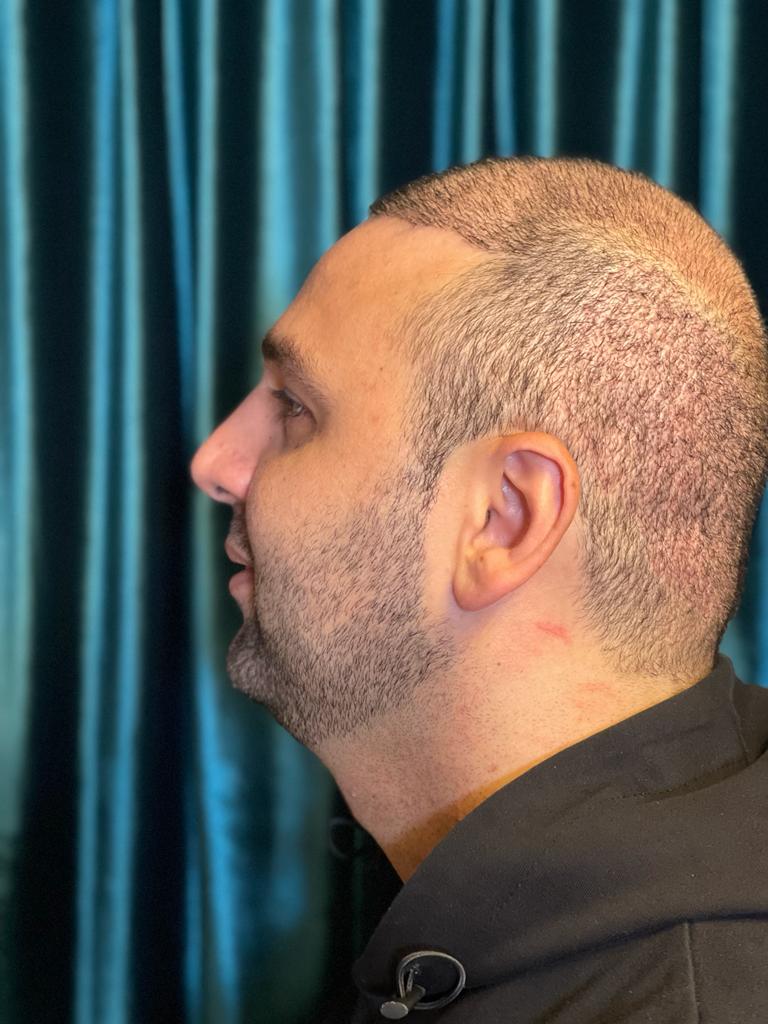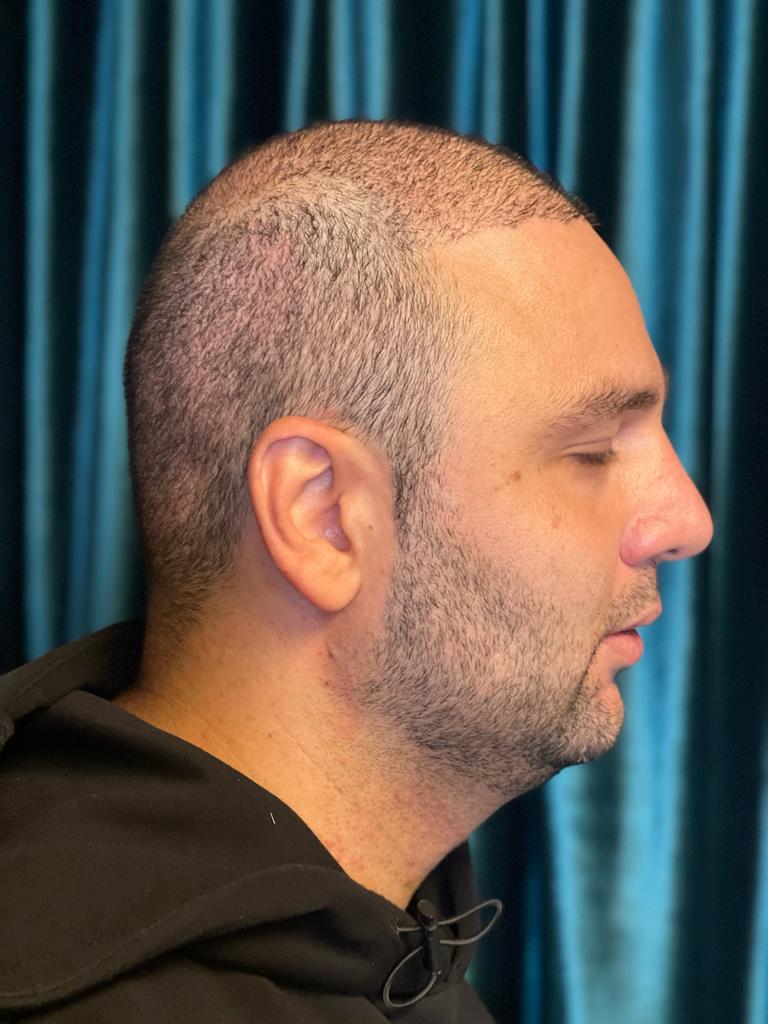


Many patients willing to do a hair transplant wonders about the FUE donor area after 2 weeks. How does it look? Is it painful? What care does it require?
Let’s dig into the FUE donor area after 2 weeks.
Table of Contents
What is the donor area?
The donor area is the region where the surgeon harvest the grafts. The surgeon harvests grafts in the back of the head because this hair is “eternal hair,” it is not sensitive to androgen.
Androgen is a male hormone causing a common type of baldness, androgenic baldness. This type of hair loss affects both men and women. In men, androgenic baldness causes a bald spot at the top of the head; 70% of men suffer from this type of baldness in their lifetime.
Androgenic baldness affects women too, for less. In females, this type of baldness does not cause bald spots but a loss of hair density. It often results from hormonal imbalance or menopause.
What is an FUE hair transplant?
FUE stands for Follicular Unit Extraction. FUE is the most common hair transplant procedure. The doctor harvest grafts one by one in the donor area, then implants them in the bald spots. This technique offers very natural results because of graft sorting. One-hair grafts are the best to draw the frontline, while two-hair and three-hair grafts are excellent to give volume at the top of the head.
How does an FUE donor area after 2 weeks look?
After an FUE hair transplant, the medical team applies a bandage on the donor area to avoid stains and infection. The region needs to heal. The surgeon did small incisions to extract the grafts one by one. Those incisions heal in a few days, usually from 5 days to a week.
Scabs usually appear a few hours after the surgery. It is an ordinary and excellent sign; it means the area is starting healing. Those scabs will go away as the patient wash his hair in the next few days. When there are no more scabs, it means the healing process is over.
Redness may occur after the surgery; it is a normal phenomenon. However, seek medical attention if the redness does not disappear within four weeks.
The FUE hair transplant method leaves no visible scar in the donor area.
The FUE donor area after 2 weeks has healed, and the hair has started growing back.
What to do and not do with an FUE donor area after 2 weeks?
Avoid touching the donor area during the healing process as it may cause an infection. It is possible to cut your hair in the donor area two weeks after an FUE hair transplant.
Seek medical attention if you have fever, pain, swallowing skin. Those are the symptoms of an infection.
Is FUE the best hair transplant technique?
As said above, FUE is a widespread hair transplant technique. In most clinics, FUE is the standard procedure. However, FUE is not the hair transplant technique offering the best results.
DHI, Direct Hair Transplant, has a more natural look than FUE. During a DHI hair transplant, the surgeon implants the grafts right away without letting them in a solution; they have a better survival rate.
Most clinics prefer FUE because it is more profitable: it requires less skill and less time than DHI. They often charge more for DHI and pretend this technique is not suitable for large bald spots. DHI is ideal for either bald spots, either low density.
At Hair Turkey, we are proud to perform only the most efficient technique! DHI hair transplant. Contact us via WhatsApp or our contact form to get a high-quality DHI hair transplant with a VIP service.
